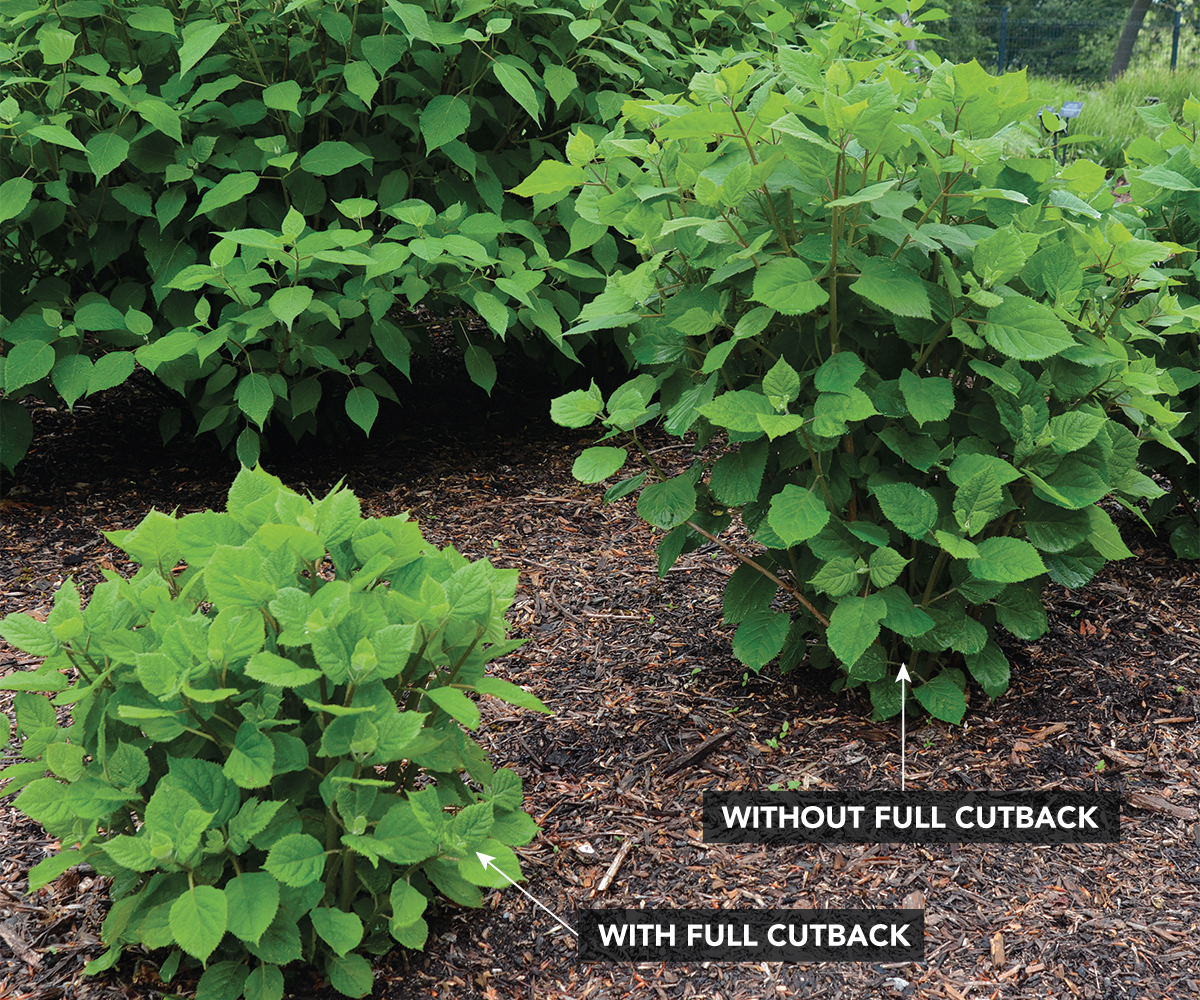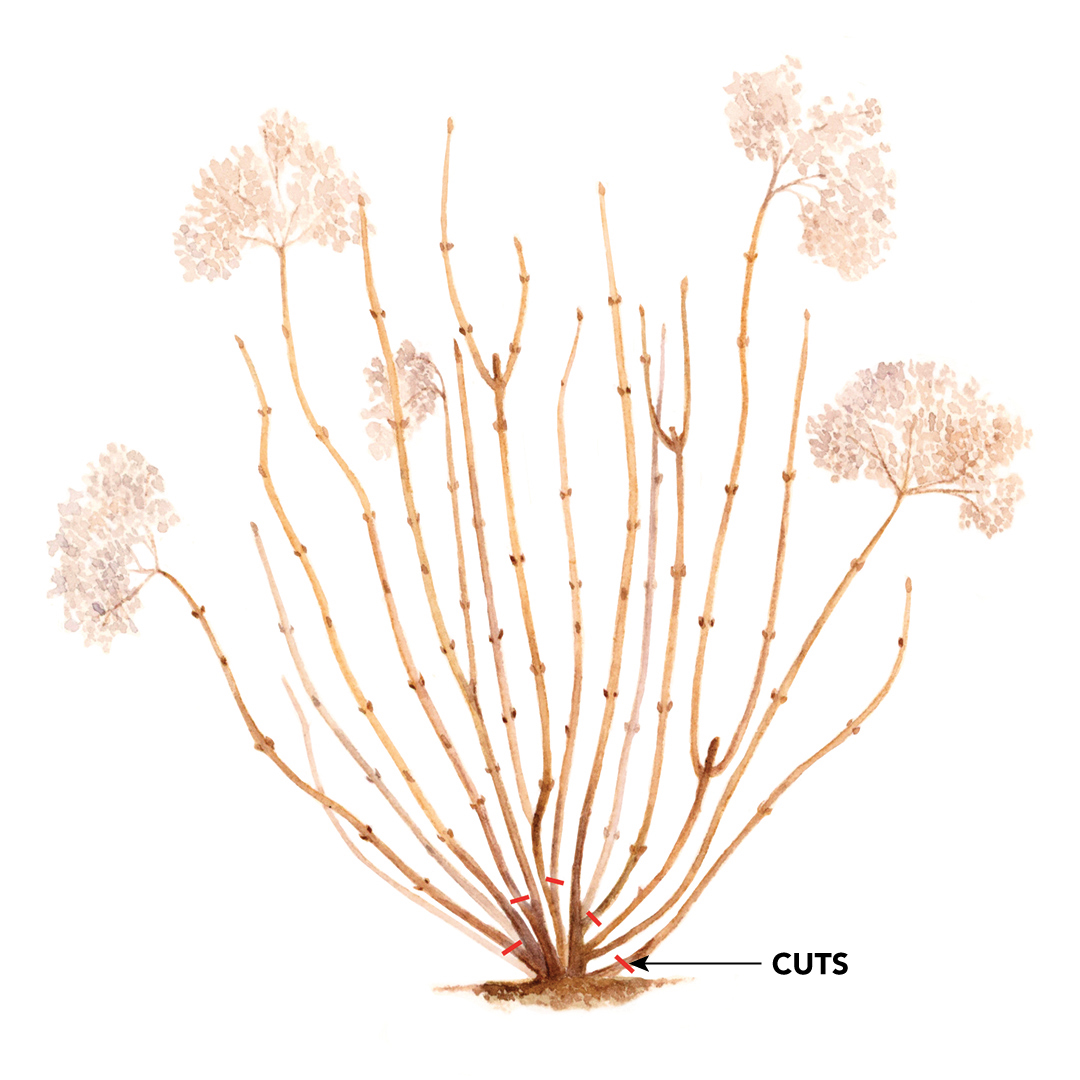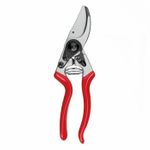A Better Way to Prune Smooth Hydrangeas
A more balanced approach to trimming leads to stronger plants

All of the hydrangeas in the native hydrangea plant trial done at Mt. Cuba Center bloom on new wood, which means that the flower buds develop when the shrub starts actively growing in spring and early summer. These plants can be pruned any time from fall to early spring, and even if stems are killed to the ground by extreme cold, the plant will still flower reliably in midsummer. Read about the best native hydrangea species here.
Perhaps due to this adaptability, annual spring cutbacks are a common landscape practice for smooth hydrangeas and related cultivars. As part of our trial, the Mt. Cuba team sought to determine if there are any long-term effects of heavy spring cutbacks. For three consecutive years, one example of each hydrangea was cut back to about 6 to 8 inches above the ground.

The immediate result we noticed, compared to unpruned control plants, was that the plants developed more-compact habits. There was also a slight delay in blooming, though not as much as we expected. Generally, blooming was delayed by just a week or two. The plants that were cut back produced fewer flowers, but these inflorescences were often 20% to 100% larger than those of the control group. For example, ‘Haas’ Halo’, which normally has flower heads that are about 8 inches across, had blooms that were 12 to 16 inches in diameter after a cutback.
We also noticed an unusual increase in sun tolerance for cut-back plants, possibly because their well-established root systems were supporting a smaller number of stems than they normally would have been.
 |
 |
However, the cutbacks did not correct floppy habits, and they had little impact on the overall size of the more compact cultivars. After three years of heavy annual cutbacks, we started to notice a little burnout, typified by lower flower production in the cut-back plants.
Based on these observations, we concluded that a full annual cutback is not the best practice in most cases. We recommend instead a more balanced approach, in which a fifth to a third of the oldest stems are pruned to the ground each year in late winter. This will help keep the plant flowering well, it may keep the habit a little more compact, and it is certainly easier on the plant than an all-out cutback every single year.
Sam Hoadley is the manager of horticultural research at Mt. Cuba Center in Hockessin, Delaware.
Illustrations: Jessica Daigle
Fine Gardening Recommended Products

Felco Pruning Shears (F 9) - High Performance Swiss Made One-Hand Left-Handed Garden Pruners
Fine Gardening receives a commission for items purchased through links on this site, including Amazon Associates and other affiliate advertising programs.

Corona High Performance Orchard Loppers
Fine Gardening receives a commission for items purchased through links on this site, including Amazon Associates and other affiliate advertising programs.

Sun Joe Cordless Telescoping Pole Chain Saw
Fine Gardening receives a commission for items purchased through links on this site, including Amazon Associates and other affiliate advertising programs.







Comments
Log in or create an account to post a comment.
Sign up Log in